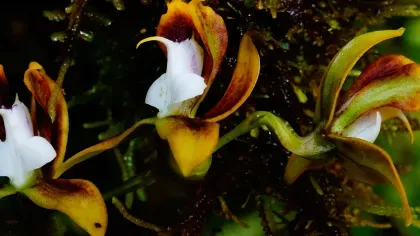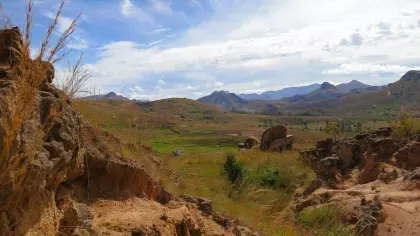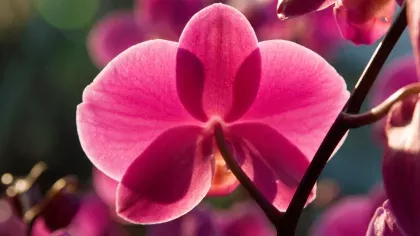5 May 2022
The Orchid Effect
The pause in Garden maintenance due to the 2020 COVID-19 lockdown led to some surprising new appearances in one of the grass verges at Kew…

The first COVID-19 lockdown of 2020 renewed Kew Horticulturalist Alberto Trinco's appreciation for gardens left to grow wild.
The long grass that dominated Kew in spring was a calming balm for the mind and a heaven for wildlife.
The importance of rewilding is acknowledged by No Mow May, a campaign that invites people to leave lawns undisturbed in order to welcome back some wildlife to our gardens and cities.
At Kew Gardens, a few areas of the usually meticulously maintained lawn are being left unmanaged or converted into wildflower meadows.
One of these is next to the Princess of Wales Conservatory and is gradually becoming a riot of plant diversity.
In June 2020, when cycling past the north end of the Conservatory, Alberto noticed something rather unusual.
Right there, among the tall grass and wildflowers, a small pyramidal orchid (Anacamptis pyramidalis)!
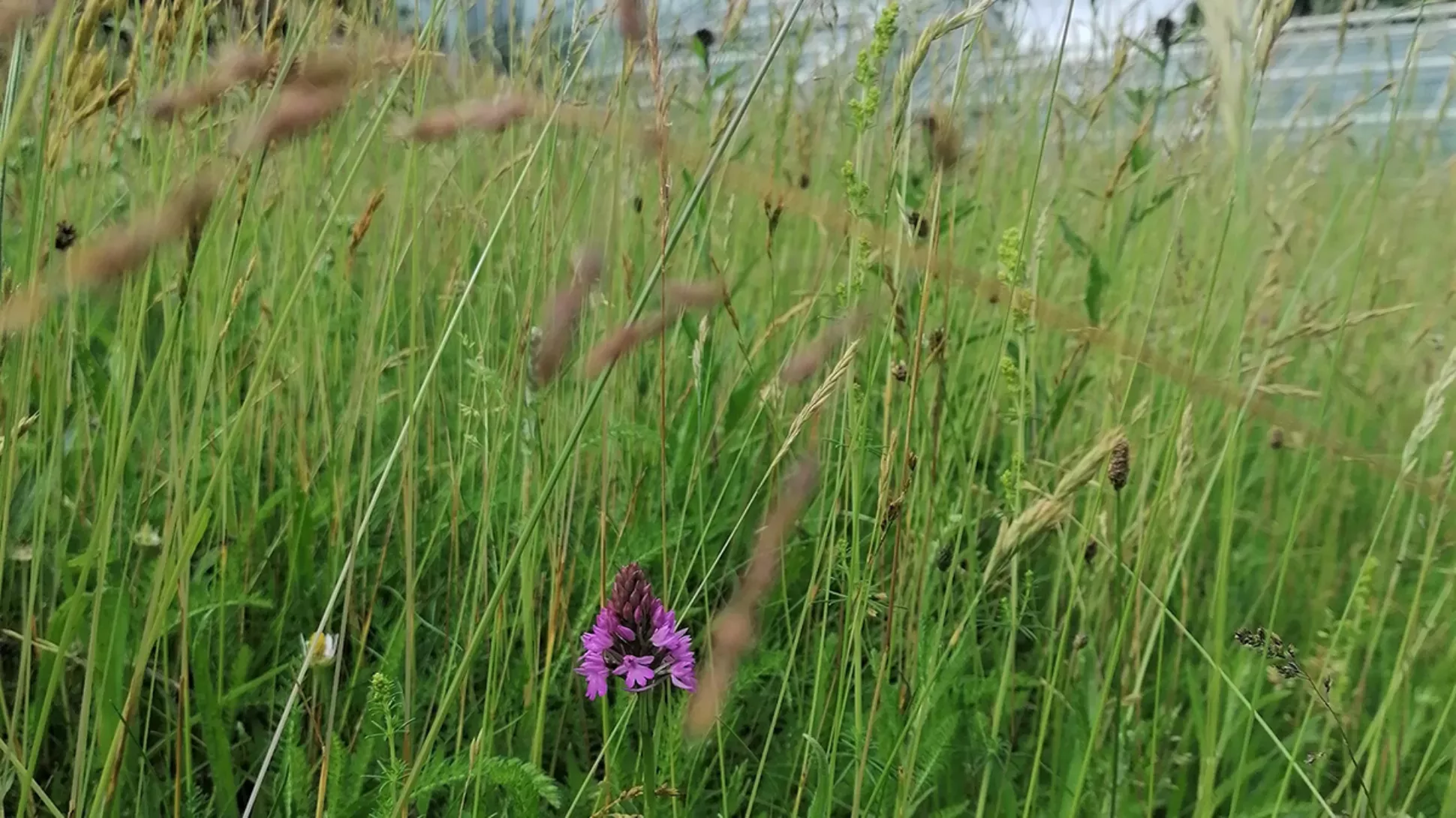
The pint-sized pyramid
The pyramidal orchid is found across Europe, down into North Africa and even parts of the Middle East.
It gets its name from the loosely pyramidal shape of the flowers before they fully bloom.
The flowers can be a deep purple, a lighter pink, or in some cases pure white.
It is not uncommon to find this flower in an established meadow, and a few specimens have appeared in our Arboretum over the past few years.
But it was incredibly surprising to see one just outside the Princess of Wales Conservatory. How did it come to be there? How long has it been there, unnoticed or unable to flower?
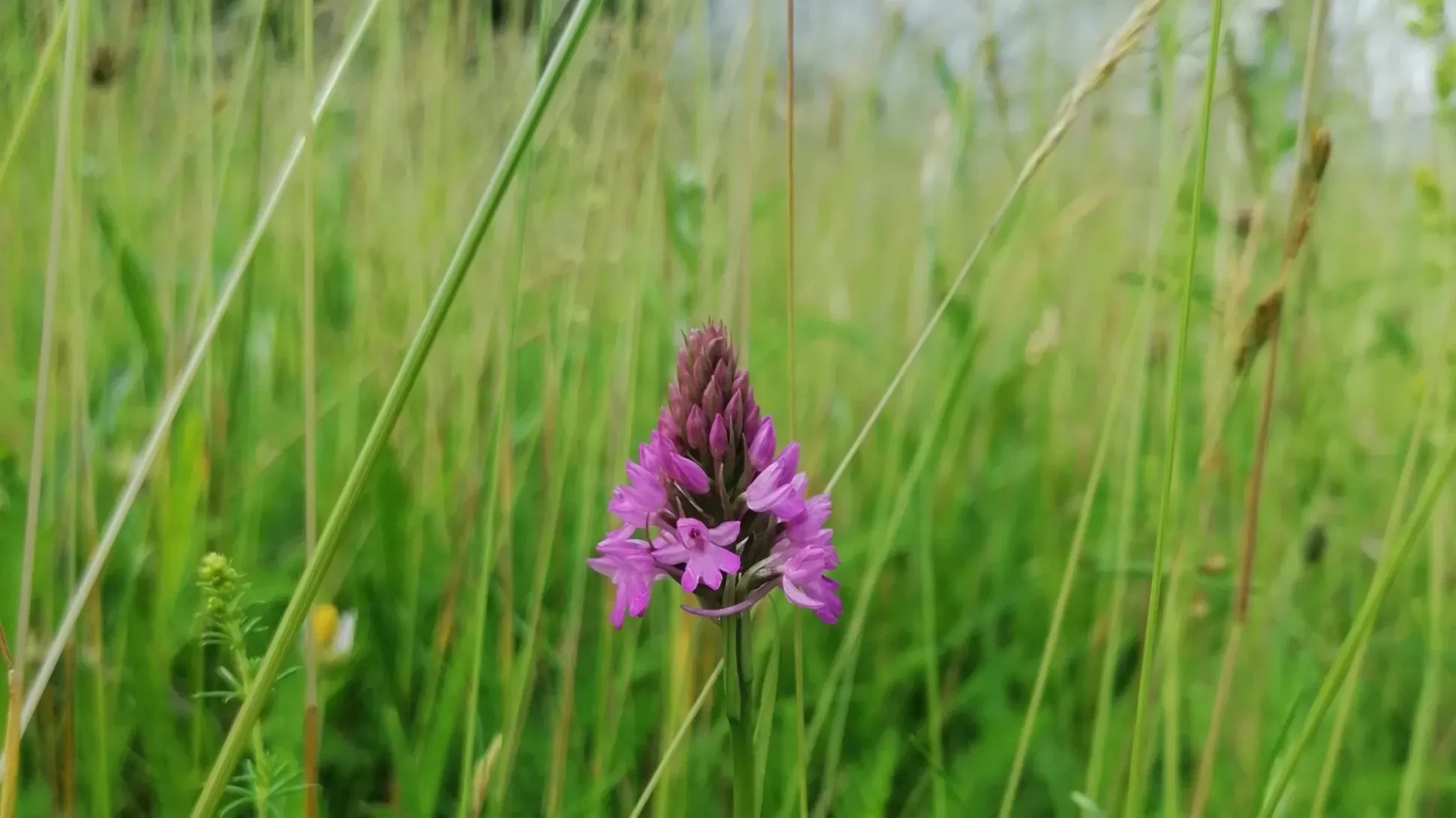
Lying in wait
Since the plant must have been a few years old to be able to flower, a possible explanation is that the lack of lawn maintenance in 2020 during the first COVID-19 lockdown helped the plant to gather energy.
A year later, with the fortunate yet intentional return of wildflowers to the lawn, the plant managed to bloom.
It has been observed in recent years that pyramidal orchids seem to favour artificial environments, such as motorway verges, canal paths and even Stansted airport!
Alberto hopes that if there is one pyramidal orchid on the Princess of Wales Conservatory lawn, more will appear in years to come. And with this plant able to set seeds, the little meadow could soon become a native orchid heaven.
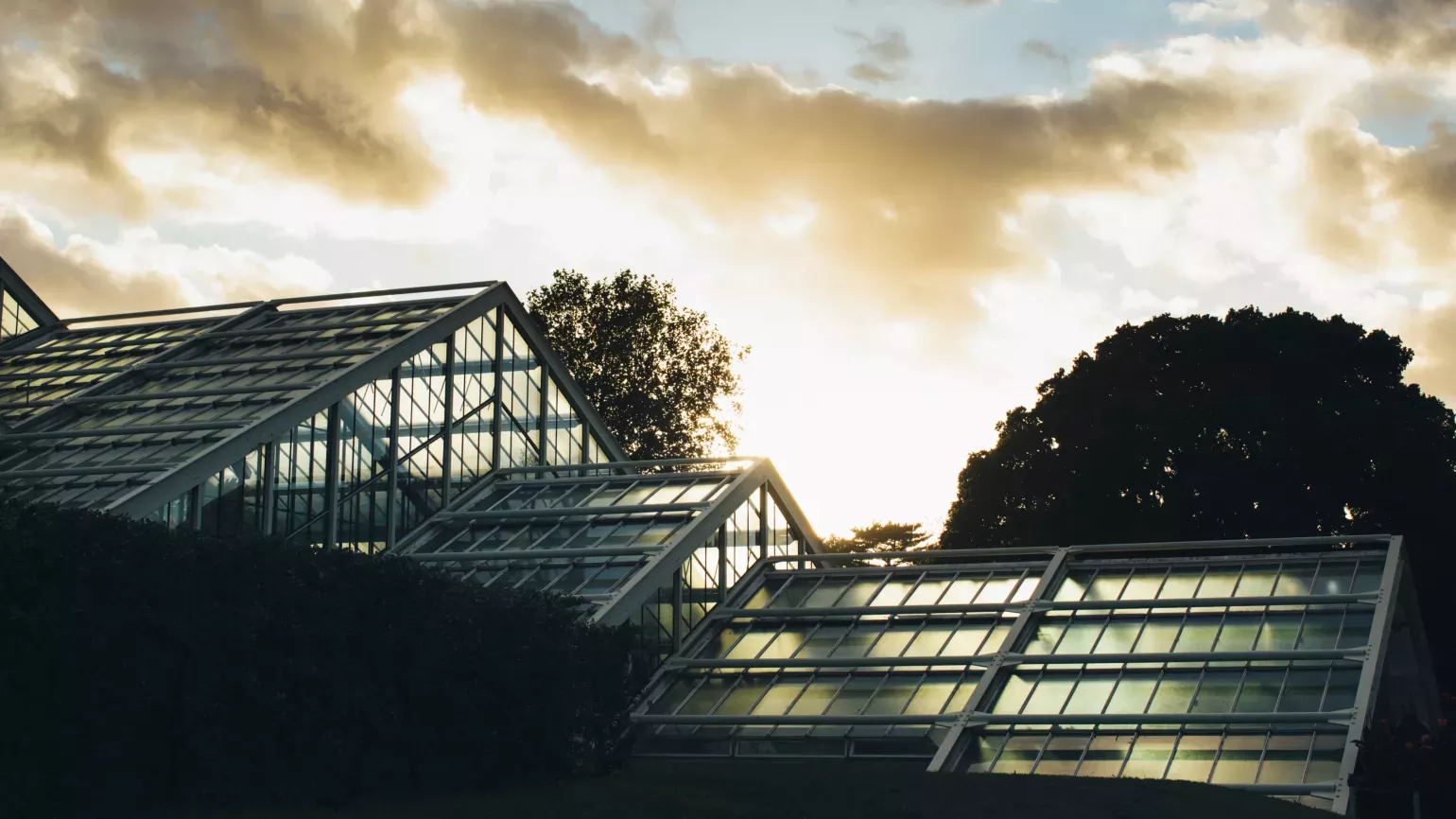
The importance of wildflowers
Wildflowers, like orchids, form a crucial part of the UK’s ecosystem. They provide food for a wide variety of animals including insects, birds and small mammals.
But over the last century, we’ve lost around 97% of our native wildflower meadows.
Kew’s Grow Wild project is the UK’s biggest wildflower campaign, bringing people together to transform local spaces with native wildflowers and plants.
With the help of this campaign, the future is looking bright and full of wildflowers.
This little pyramidal orchid discovery is a perfect example of what a big difference we can make with just some small changes.
Keep an eye out for the pyramidal orchid in bloom when you visit Kew this summer.


